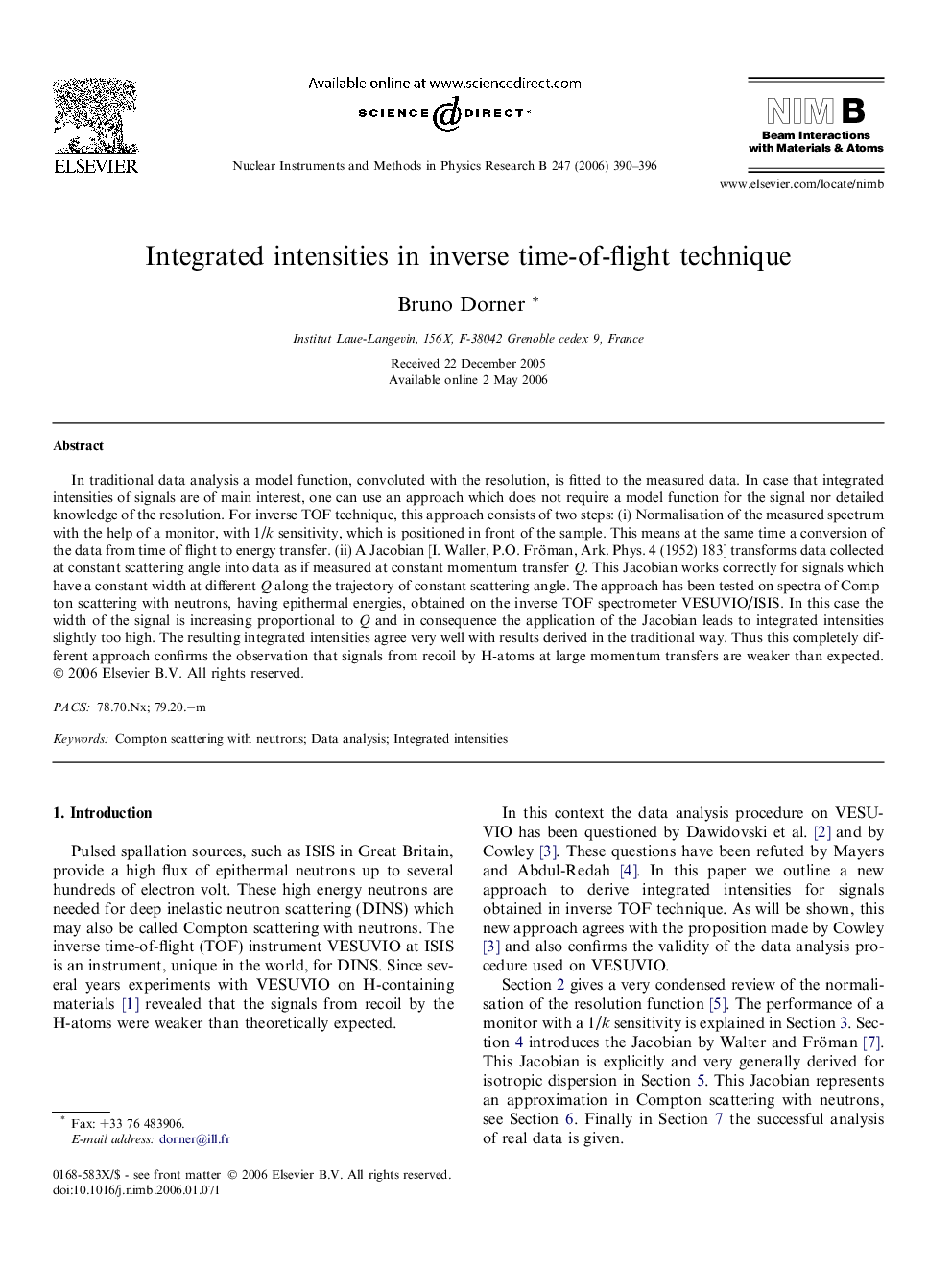| Article ID | Journal | Published Year | Pages | File Type |
|---|---|---|---|---|
| 1688043 | Nuclear Instruments and Methods in Physics Research Section B: Beam Interactions with Materials and Atoms | 2006 | 7 Pages |
Abstract
In traditional data analysis a model function, convoluted with the resolution, is fitted to the measured data. In case that integrated intensities of signals are of main interest, one can use an approach which does not require a model function for the signal nor detailed knowledge of the resolution. For inverse TOF technique, this approach consists of two steps: (i) Normalisation of the measured spectrum with the help of a monitor, with 1/k sensitivity, which is positioned in front of the sample. This means at the same time a conversion of the data from time of flight to energy transfer. (ii) A Jacobian [I. Waller, P.O. Fröman, Ark. Phys. 4 (1952) 183] transforms data collected at constant scattering angle into data as if measured at constant momentum transfer Q. This Jacobian works correctly for signals which have a constant width at different Q along the trajectory of constant scattering angle. The approach has been tested on spectra of Compton scattering with neutrons, having epithermal energies, obtained on the inverse TOF spectrometer VESUVIO/ISIS. In this case the width of the signal is increasing proportional to Q and in consequence the application of the Jacobian leads to integrated intensities slightly too high. The resulting integrated intensities agree very well with results derived in the traditional way. Thus this completely different approach confirms the observation that signals from recoil by H-atoms at large momentum transfers are weaker than expected.
Related Topics
Physical Sciences and Engineering
Materials Science
Surfaces, Coatings and Films
Authors
Bruno Dorner,
